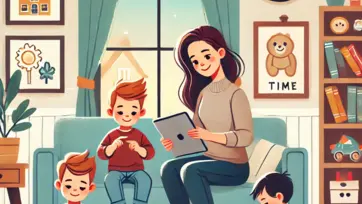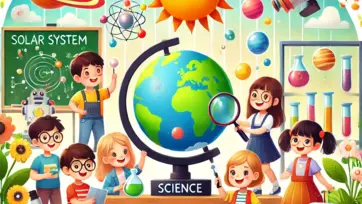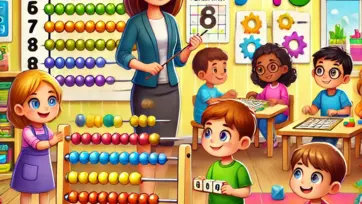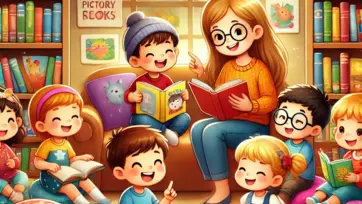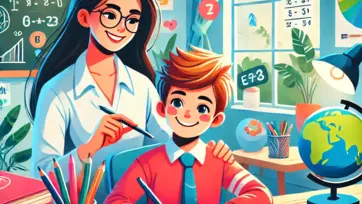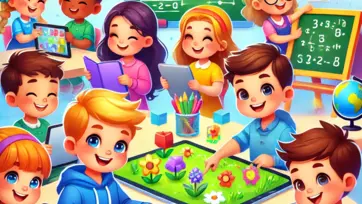History is often seen as a subject filled with dates and facts, but it doesn’t have to be boring! By using interactive learning methods, parents and educators can turn history into an exciting adventure for kids. When children engage with history through hands-on activities, storytelling, and technology, they develop a deeper understanding and appreciation for the past. In this article, we’ll explore creative ways to make history fun and engaging for kids.
1. Bring History to Life with Storytelling
History is full of fascinating stories, and storytelling is one of the best ways to make it engaging for kids.
How to Use Storytelling:
- Turn historical events into exciting narratives with characters, emotions, and dramatic twists.
- Read historical fiction books that bring the past to life.
- Use audio stories or podcasts that dramatize key moments in history.
- Encourage kids to write their own historical stories, imagining life in different time periods.
2. Use Hands-On Activities and Crafts
Children learn best through hands-on activities. Bringing history into arts and crafts can make it more interactive.
Activity Ideas:
- Create historical costumes and have kids dress up as historical figures.
- Build mini models of famous landmarks, such as the pyramids of Egypt or the Great Wall of China.
- Make old-fashioned recipes and let kids experience history through food.
- Create a time capsule with items representing today’s life and discuss how things have changed over time.
3. Visit Historical Sites and Museums
A field trip to a museum or historical site is one of the most effective ways to spark a child’s interest in history.
Tips for Visiting Historical Places:
- Choose interactive museums where kids can touch and explore exhibits.
- Look for reenactment events, where actors bring history to life.
- Give kids a scavenger hunt to find historical artifacts.
- Encourage them to take notes or draw pictures of what they see.
4. Use Educational Games and Apps
Games can make history fun by allowing kids to experience historical events in an engaging way.
Top History Games and Apps:
- Oregon Trail: A classic game that teaches about pioneer life.
- Time Traveler Kids: An interactive app that lets kids explore different historical eras.
- Civilization Series: A strategy game that introduces world history and civilizations.
- Mystery of History: An educational board game that makes history a fun challenge.
5. Watch Historical Movies and Documentaries
Movies and documentaries can provide visual storytelling that brings history to life.
Kid-Friendly Historical Movies:
- Night at the Museum (2006): A fun way to introduce kids to historical figures.
- Liberty’s Kids (TV Series): A cartoon about the American Revolution.
- The Prince of Egypt (1998): A beautifully animated movie about ancient history.
- The Book of Life (2014): A great introduction to Mexican history and culture.
After watching, discuss the historical accuracy of the film and encourage kids to research more about the events portrayed.
6. Make Learning History Personal
Connecting history to a child’s own life can make it more meaningful.
Ideas to Personalize History:
- Research family history and create a family tree.
- Discuss how historical events affected their ancestors.
- Look at old family photographs and compare them with modern life.
- Interview older family members about their past experiences.
7. Encourage Role-Playing and Reenactments
Acting out historical events can make learning fun and memorable.
How to Organize Reenactments:
- Assign roles to children and have them act out historical moments.
- Use simple costumes and props to make the experience immersive.
- Encourage kids to write short scripts based on real historical events.
- Record the reenactments as a fun memory and learning tool.
8. Use Interactive Timelines and Maps
Timelines and maps help kids visualize historical events and their locations.
Ways to Use Timelines and Maps:
- Create a giant wall timeline and add events as kids learn about them.
- Use an interactive digital timeline with videos and images.
- Mark important places on a world map and connect them with historical events.
- Create a travel log where kids pretend to visit different historical sites.
9. Incorporate Music and Songs
Music is a great way to make history stick in children’s minds.
Ideas for Using Music:
- Teach historical folk songs and explain their meaning.
- Create rhyming chants to remember important dates and events.
- Use music from different time periods to understand cultural history.
- Write a history-themed rap or song to make learning interactive.
10. Encourage Creative Projects
Letting kids create their own history-themed projects fosters creativity and deeper understanding.
Project Ideas:
- Make a history scrapbook with pictures and facts.
- Create a poster about a famous historical figure.
- Write and illustrate a historical comic book.
- Design a mini-museum exhibit at home with objects and explanations.
Conclusion
Making history fun for kids is all about engagement and creativity. By using storytelling, hands-on activities, games, movies, and real-life experiences, history becomes an adventure rather than a chore. When children experience history interactively, they develop a love for the past and a deeper understanding of how it shapes the present. Try these methods and watch as history comes alive for the young learners in your life!

